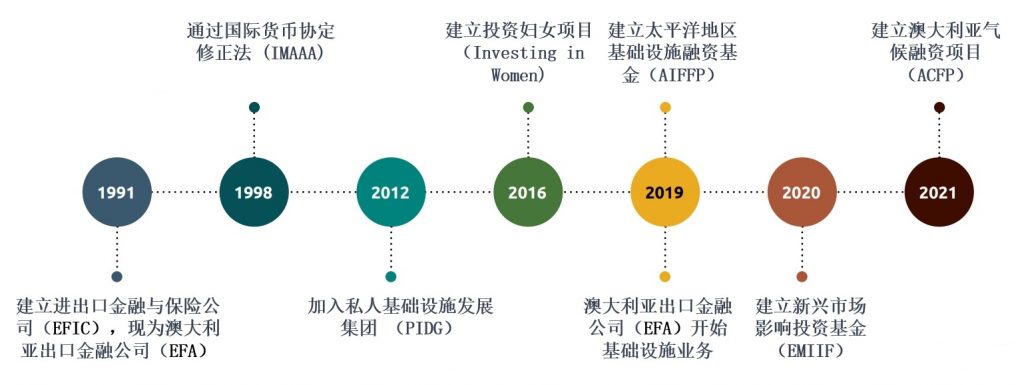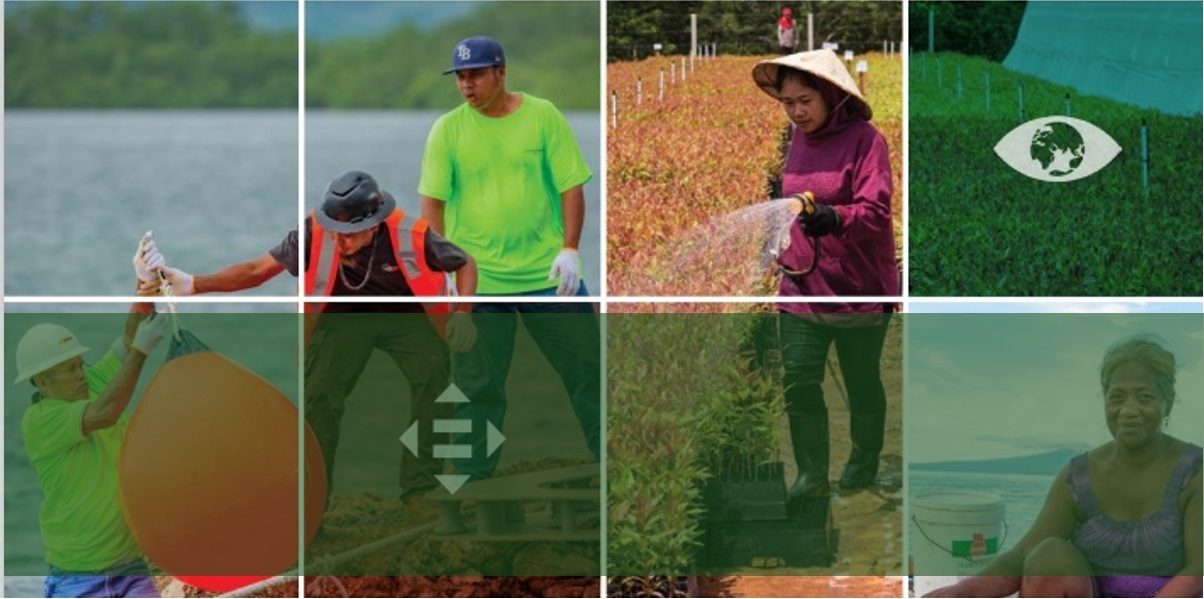Author: Sun Weiqing
The first "Development Financing Assessment Report" released by the Australian government pointed out that Australia's existing development financing mechanisms have achieved positive results but there is still room for improvement. Evaluation recommendation: Based on existing mechanisms, work closely with development financial institutions of like-minded partners to help partner countries better cope with increasingly complex development challenges and promote the achievement of sustainable development goals.
In August this year, the Australian government released the Development Financing Assessment Report for the first time. This report, together with the Performance Assessment and Implementation Framework released at the same time, provide support for Australia's first International Development Policy in the past decade. The assessment concluded that Australia's existing development finance mechanisms have achieved positive results but still have room for improvement. This assessment aims to enhance the effectiveness, efficiency, impact and risk management of Australia's development financing. Based on existing mechanisms and within the scope of feasibility, it will work closely with development financial institutions of like-minded partners to better help partner countries cope with the crisis. Increasingly complex development challenges and achieving the Sustainable Development Goals (SDGs).
Why does Australia conduct development finance assessments?
The Australian Government views sustainable development financing as a key element of the stability and success of the Indo-Pacific region. The development needs of the Indo-Pacific region are huge and growing. Developing countries in the region continue to develop and the challenges they face are constantly changing. Traditional grant financing is insufficient to meet the region’s development needs, and partner countries require support from a different mix of financing types. For a long time, Australia's aid projects have been almost entirely in the form of grants, and the Australian government wants to understand the impact and role of innovative use of grant and non-grant financing instruments on aid projects.

In 2019, the Australian Department of Foreign Affairs and Trade (DFAT) released the "Feasibility Study on Increasing the Application of Development Financing in Australian Aid Projects" to systematically examine the wider use of development financing tools and their impact. In August 2022, DFAT led a review of new development finance to support Australia’s foreign, trade, security and development policies and objectives. The review defines “new development finance” as finance that produces both development results and financial returns. Australia hopes to draw on global best practices and systematically consider options such as adjusting existing mechanisms and creating new development financing institutions to better leverage investment from bilateral and multilateral aid agencies, the private sector, charities and other institutions to ensure Australia's Development finance supports nation-building in the Indo-Pacific region, maintains climate-resilient infrastructure, improves gender equality, and supports small and medium-sized enterprises.
A brief history of development finance in Australia

(DFAT/Photo)
What are the key findings of the assessment?
The review found that building on existing results from Australia's official development assistance program, development finance has the potential to expand the tool options available and enable Australia to better tailor development assistance programs to respond to the needs of development partners.
AustraliaRapidly expand loans, grants and moredevelopfinancing toolsusage of. Australia’s current development financing commitments are approximately A$7.3 billion (approximately US$4.9 billion), including A$3.45 billion in budget support loans (approximately US$2.3 billion), A$1.2 billion in the Pacific Infrastructure Financing Facility (AIFFP) (approximately US$800 million) ), AUD 140 million for the Climate Finance Program (ACFP) (approximately USD 94 million), AUD 250 million for the Emerging Markets Impact Investment Fund (EMIIF) (approximately USD 168 million), AUD 170 million for Investing in Women and Private Infrastructure Development Group (PIDG) in a mixed financing (approximately $114 million) and A$2.5 billion to support telecommunications technology company Telstra's acquisition of mobile telecommunications and network services provider Digicel Pacific's loan and insurance portfolio (approximately $1.68 billion). These mechanisms are currently working well, and continuing to expand existing mechanisms will help further strengthen Australia’s development financing capabilities, support modern partnerships, and meet the needs of development partners.
The development needs of the Indo-Pacific and Southeast Asia are huge and growing.COVID-19 spending, rising global interest rates, debt sustainability challenges, the urgency to support the energy transition, and climate change mitigation and adaptation have further expanded development needs in the Indo-Pacific and Southeast Asia. Global challenges such as COVID-19 have also widened the gender gap. The World Economic Forum estimates that the time it will take to achieve gender equality has increased from 99 years before the pandemic to 132 years. As a result, the financing gap to achieve the SDGs has increased significantly. By 2030, the financing gap to achieve the United Nations Sustainable Development Goals is expected to increase from US$2.5 trillion per year to US$3.9 trillion.

(Amartha/Photo)
Where is the future of development finance in Australia?
The Development Financing Assessment Report made eight recommendations, all of which were accepted by the Australian government. Key recommendations include:
Expanding development financing based on existing mechanisms to support Southeast Asia and the Pacific in meeting development challenges. The evaluation concludes that: Building on official development assistance grant programs, development finance provides Australia with richer tools to tailor responses to meet the needs of development partners. The assessment recommends that Australia's use of development financing instruments should avoid placing unsustainable debt burdens on development partners and should not introduce excessive risks to the government's balance sheet.
continuesupplydiscountsexdevelopFinancing supportpacific regionconstructionclimatetoughnessinfrastructure. The assessment concludes: The Pacific region urgently needs affordable, high-quality and climate-resilient infrastructure, as well as appropriate funding for infrastructure operation and maintenance. Concessional development finance typically provides funds at below-market interest rates, a grace period (during which the beneficiary of the loan does not have to repay the debt), or a combination of low interest rates and a grace period.
Strengthen ties with private investors, like-minded institutions and multilateral development banks,Scaling up blended finance and climate finance mechanisms. According to the evaluation recommendations, Australia will increase the capital of the Emerging Markets Impact Investment Fund (EMIIF) established in 2020 and change its name to Australian Development Investments (Australian Development Investments) to expand its brand effect and influence, and significantly increase the mixed financing of development projects ability. The new Australian Development Investment Corporation can provide funding totaling up to A$250 million, with a focus on climate impact and gender equality, delivering financial returns alongside positive social and environmental impact.
Establish an "International Development Financing Advisory Committee" to strengthen development financing management. The committee, composed of representatives from various government departments, will advise the government on development finance issues including investment performance, opportunities and risks, investment portfolios and its contribution to foreign, trade, investment and development policy. The committee will consider how the development financing strategy is consistent with the regional cooperation strategy, the relative advantages of bilateral versus multilateral cooperation, the best combination and allocation of financing methods, etc. The committee will also engage in targeted engagement with like-minded partners to identify long-term governance reforms, financing efficiencies, capability gaps, improve transparency, and consider climate risks across the portfolio.

(Photo/New Forests)
Regularly announce the progress of development financing investment and improve the transparency of development financing.Australia has yet to publicly report on its emerging development financing and impact, which is inconsistent with international best practice. The evaluation believes that establishing a regular reporting system for development financing mechanisms will help make the international development system more coordinated and transparent, thereby gaining more public support.
Ensure new development finance investments incorporate gender equality objectives. Development financing investments will introduce gender equality goals to ensure that 80%’s new development financing projects effectively address gender equality issues during implementation. Australia has emerged as a leader in gender-lens investing, with its blended financing approach successfully attracting support from private investors and philanthropic funding. Joining 2X Global is expected to further enhance Australia’s leadership in promoting gender-focused investment globally.

Establish a DFAT Office of Support and Private Sector Financing Cooperation, and no new development financing institutions will be established for the time being.. There has been a long-standing discussion about whether Australia should establish a development finance agency. The review concludes that Australia should focus on continuing to develop and expand existing financing mechanisms that are performing well. Holding off on establishing new development finance institutions avoids the costs, risks and delays involved in establishing new institutions. As development finance increases in scale and complexity in Australia, opportunities for the establishment of development finance institutions may become more mature in the future. The report also makes recommendations on the model of future financing institutions.
Strengthen capacity building to attract project preparation support and financing to help address climate challenges and wider infrastructure needs. In addition, DFAT should regularly conduct assessments of development finance and report to the International Development Finance Advisory Committee on development finance-related practices, results achieved and gaps.

(DFAT/Photo)
References:
https://www.dfat.gov.au/sites/default/files/development-finance-review-2023.pdf
https://www.dfat.gov.au/sites/default/files/tor-development-finance-review.pdf
https://www.dfat.gov.au/sites/default/files/feasibility-study-use-non-grant-financing.pdf
https://www.un.org/sustainabledevelopment/financing-for-development/
Past review
- Australia releases new international development policy: Supporting a peaceful, stable and prosperous Indo-Pacific region
- Japan's Third Revision of Development Cooperation Charter: What Have Been Changed?
- 2024 Budget Proposal Highlights Biden's Foreign Aid Policy Priorities
- Macron's Re-election and the Continuation of Modernizing French Development Cooperation
- Evaluating German Development Cooperation: What's the OECD Development Assistance Committee's Take?
- What does the new UK international development strategy say?
- Global Development Initiative: Dimensions You Need to Think about

All rights reserved, please indicate the source when citing.
